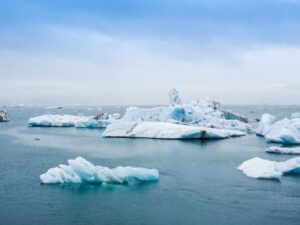The Earth’s natural greenhouse effect is essential for maintaining a habitable temperature. Gases like carbon dioxide, methane, and nitrous oxide trap heat from the sun, preventing it from escaping back into space. However, human activities, such as burning fossil fuels and deforestation, have significantly increased the concentration of these greenhouse gases in the atmosphere, intensifying the greenhouse effect and causing global temperatures to rise. This is “global warming” resulting in what is called “climate change.”
Climate change is a serious threat to our planet and its inhabitants. While some may choose to dismiss the evidence, the scientific consensus is clear and overwhelming. Climate change is happening, regardless of personal beliefs.
The Evidence is Mounting
Here are several key indicators that show global warming is a thing and is occurring right now:
- Rising Global Temperatures: Global average temperatures have increased significantly over the past century, with the last decade being the warmest on record.
- Melting Glaciers and Ice Sheets: Glaciers and ice sheets worldwide are shrinking at an alarming rate, contributing to sea level rise.
- Rising Sea Levels: Sea levels are rising due to the melting of glaciers and ice sheets and the expansion of ocean water as it warms.
- Changing Weather Patterns: Extreme weather events, such as heatwaves, droughts, floods, and hurricanes, are becoming more frequent and intense.
- Ocean Acidification: The increasing amount of carbon dioxide in the atmosphere is being absorbed by the oceans, leading to ocean acidification, which threatens marine ecosystems.
Climate Change: A Growing Threat to Everyday Life
Climate change is no longer a distant threat; it is a reality increasingly affecting our daily lives. As global temperatures continue to rise, we witness more frequent and severe extreme weather events, such as heatwaves, droughts, floods, and hurricanes. These events can have devastating consequences, including property damage, loss of life, and disruptions to essential services.


While the overwhelming scientific consensus supports the existence of climate change, a significant portion of the population remains skeptical or outright denies its reality. Regardless of whether one believes in it, one cannot deny the changes we are experiencing in our weather patterns and their effect on us:
- Food shortages due to crop failures and reduced agricultural productivity. This has resulted in higher food prices and less availability.
- Water scarcity as glaciers and ice sheets melt and rainfall patterns change. Rain is increasingly essential as we drain our aquifers, but it’s becoming less reliable.
- Millions of people have been displaced due to rising sea levels and extreme weather events.
- Loss of biodiversity as species struggle to adapt to changing environmental conditions.
Taking Action: A Path to a Sustainable Future
While the challenges posed by climate change are significant, there are many actions we can take to mitigate its impacts. We are aware of those—reducing our carbon footprint, supporting renewable energy, recycling, and advocacy. But factors such as denial as a coping mechanism, disinformation campaigns, the expense of implementing renewable energy sources, and fear that addressing climate change will harm the economy or lead to job losses keep many from accepting what is happening…and not preparing accordingly.
If you haven’t begun working on food security, start now. Understand that as the weather becomes more extreme, your food choices will increase in price but decrease in availability. Review the information here on how to organize and stockpile food for the short and long term. Also, store whatever fresh water you can. Use rain catchment vessels from buckets to full systems for your garden. Buy cases or 5-gallon jugs of bottled water. Learn home canning, dehydration, and consider obtaining a freeze-dryer or purchasing from companies that provide freeze-dried food options.
Stay weather-aware, especially if you live in an area prone to hurricanes, flooding, or wildfires. Ensure that you have an emergency plan in place should such an event occur and that your property can withstand it. If it can’t, and you are unable to reinforce it, have your bug out bags ready and an evacuation plan in place.
If you live in an area prone to natural disasters, you may wish to consider relocating, as extreme weather events will not only continue but get worse and become more costly.
The answer isn’t to argue the “why” of these changes or to bicker over terminology. Belief doesn’t change the threat or the risks. The answer is to prepare based on what we see occurring and to cope with the fact that the Earth is changing regardless of why we feel it is.
Climate change is a pressing global challenge, and we are running out of time to address it. We must work together to address this issue and create a better future for ourselves and future generations. In the meantime, stay focused on preparedness to ride out the natural disasters that will continue to increase and a warming planet that will provide less food, water, oxygen, and stability unless adjustments are made and solutions are found.

https://education.nationalgeographic.org/resource/global-warming/
https://science.nasa.gov/climate-change/what-is-climate-change/
https://apnews.com/article/climate-change-price-hike-policies-emissions-1d211ff66f7ab768a69466b9af281c79
https://www.forbes.com/home-improvement/features/americans-moving-climate-change/




Pingback: Relocating Due To Climate Change: How To Decide If It’s Right For You →
Pingback: Weather-Proof Your Garden: Essential Strategies for New Gardeners